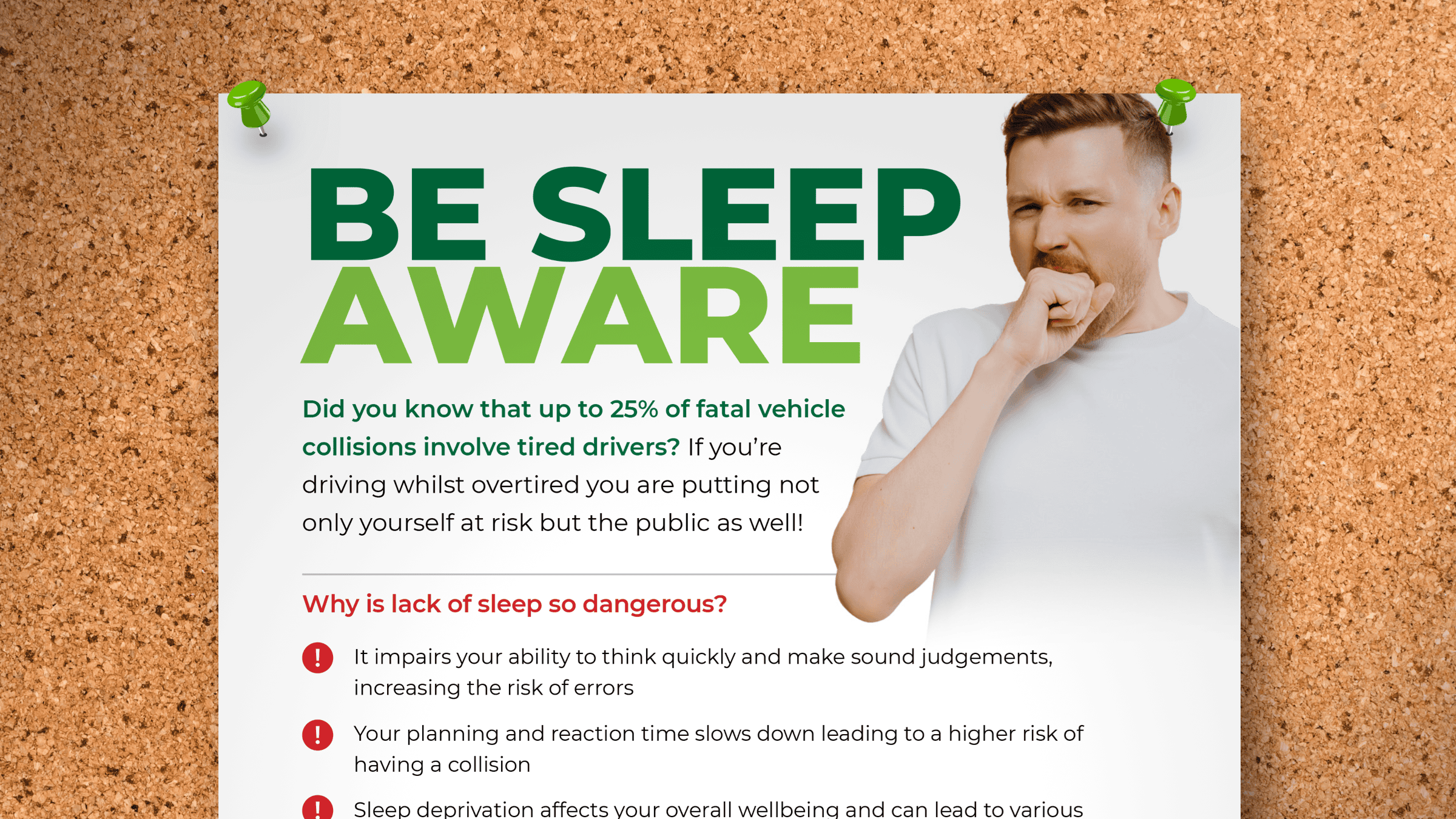Did you know that up to 25% of fatal vehicle collisions involve tired drivers?
Whilst this isn’t exclusive to the type of vehicle being driven it does raise questions in the Transport Industry. How do you as a Transport Operator ensure your drivers are fit to drive and not tired when they start work? And not just that, how do you communicate the importance of preventing fatigue as a safety measure to help your drivers avoid being involved in a collision?
It’s understandable that in an Industry where deadlines are the norm, that the adherence to drivers’ hours can be pushed to the limits by drivers. However, these regulations are not just legal requirements; they are vital safety measures aimed at preventing fatigue-related collisions.
This is why understanding the purpose of drivers' hours rules to prevent tiredness is essential for the well-being of drivers and the overall safety of their driving.

The Impact of Tiredness on Driving
Tiredness often arises from long working hours and drivers failing to get good sleep between working days. Despite not being labelled as shift workers, many commercial vehicle drivers may find themselves starting their day in the early hours one day and several hours later the next day.
Tiredness results in a decline in both mental and physical performance, impairing driving behaviour in a manner similar to alcohol, drugs, and distraction.
Machine-paced or monotonous roles, such as long stretches on the motorway, can exacerbate fatigue. The time of day also plays a crucial role for professional drivers, with heightened sleepiness before 6am and some drivers experiencing fatigue in the afternoons between 2pm and 4pm.
Signs of Fatigue and Safety Measures
Transport Operators and drivers must be vigilant for signs of fatigue, including difficulty focusing, daydreaming, yawning, and impaired reaction time. Safety measures include:
● Opening the window (a temporary solution)
● Slowing down, pulling off the road to park safely, and taking a 15-minute nap followed by a 5-minute walk before resuming driving
● If drowsy, drivers should refrain from rushing to their destination, as the law is in place to protect everyone’s safety
Adhering to drivers' hours laws is not merely a legal requirement but a fundamental step towards ensuring that fatigue does not compromise the safety of drivers and other road users.
By understanding and implementing the link between fatigue, drivers hours and proper sleep, Transport Operators can contribute to a safer and healthier environment on our roads and in our Communities.
Request the Road Skills Online Free Safety Awareness Poster
To get a copy of our downloadable poster to display on your noticeboard, send us an email and we'll get a copy over to you.

Training you Trust
Our DVSA Recognised and CPD Standards Office accredited e-learning delivers consistent, relevant and useful reminders to your drivers in the form of a 15-20 minute pre-made Toolbox Talk each month. They can log in on any device at any time!
When it comes to reminding your drivers of the importance of preventing fatigue and adhering to the regulations, we have this covered in our Fatigue and Drivers’ Hours Law Toolbox Talk with learning points on legal guidance and responsibility and the risks and solutions.
To see the full list of Toolbox Talks and see how these regular reminders will help you to improve driver behaviour as well save money - click here to arrange your free demonstration.


